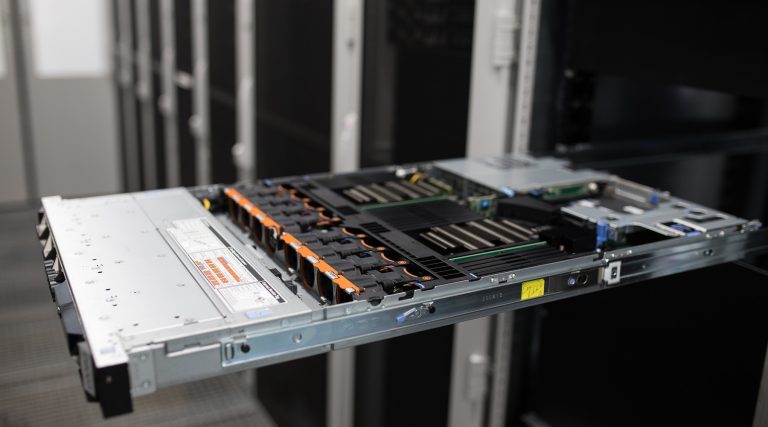An Overview Of Data Migration: Strategic Tips And Common Mistakes
Better systems or more powerful environments are some of the reasons that motivate companies to migrate data, but how do you avoid unnecessarily long downtimes and prevent compatibility issues? We have put together some practical tips for you.

Migrating to a new platform, the current version of the system, or even to a different location consists of many tasks, among which the most important can easily be hidden – a structured data migration plan. Being prepared eliminates downtime, avoids data inconsistencies or poor tool compatibility, and ultimately saves overall costs.
Data migration is the process of moving data from its original system to a new one. It involves databases, programming, network management, and/or security; thus, it requires extensive knowledge. Data migration is also most often performed in the following contexts:
- Storage – Data is moved from local disks to network storage (NAS, SAN), to the cloud, or from HDD to SSD.
- Databases – With the end of support for a database system comes the question of upgrading to a newer version. Frequent availability problems are solved by moving to the cloud, and to reduce server maintenance costs, migration to a DBaaS service where the provider takes care of routine operations is a logical choice.
- Applications – The reason for migration is often due to outdated hardware or frequent failures. Since migration always involves high costs in this case, future application development should also be considered. The usual choice is microservices architecture, which, however, requires application modification to function properly in a high-availability environment, such as a Kubernetes cluster.
- Servers And Data Centres (Infrastructure) – Migrating servers and network infrastructure to another location can be physically undertaken or moved to the cloud.
Each of the above types of data migration has its own specifics and requires an individual approach. However, some principles and procedures apply to all cases.
Approaches To Data Migration And Their Use-Cases
There are several strategies when approaching migration. However, each is suitable for a slightly different case, with its own advantages, disadvantages, and limitations. So, which one do you choose?
| Approach | Description | Advantages | Disadvantages And Limitations | Ideal Use |
|---|---|---|---|---|
| Big bang | Bulk data movement with one stage. | Movement speed. | It involves downtime (the length depends on the data size); finding the cause of errors is difficult. | Services that a long downtime will not compromise, those not in high availability and have SPOF and smaller data volumes. |
| Gradual Migration | Migration is split into several phases. | Maintains overall availability, is only isolated, and has shorter outages; it is easier to find errors. | A longer-term process; more costly. | Services that require high availability and have voluminous data, complex infrastructures, or enterprise systems. |
| Live Migration | Migration is performed under full operation without any downtime. | No impact on services or user experience. | Is suitable only for certain environments and platforms; applicability depends on the technical characteristics of the systems. | Business-critical services; migration to a virtual environment. |
However, it makes sense to combine the different approaches for large-scale projects according to the data type and system. A “hybrid” approach to data migration can help to distribute service unavailability better and eliminate some risks. In practice, this might look like moving some data in bulk using a big bang off-peak approach, for example, late at night, and then migrating the remaining functionality incrementally or through a live migration.
Benefits From Data Migration
Avoid unnecessary errors and risks associated with system migration. Leave the strategy, preparation, and execution of the migration to MasterDC. You will be rewarded with a smoother and more efficient operation.
What To Consider In The Planning Phase
The way and details of the migration process will primarily affect the project you want to move. The strategies for each type of project may be different:
- Storage Migration: Data replication can be set up depending on the system; however, offline migration is more common. Migration from smaller disks to larger disks is typically done using RAID.
- Database Migration: Dump and import are the most common for databases. A dump is a backup compatible with the target database system, which contains all the data from the original database. The import process will restore this data to the new location. Another option is to then set up data replication between the old and new systems. The data is then maintained in parallel in the two locations until the old system is shut down. This makes the entire move completely fail-safe.
- Site Migration: It is best to prepare the new environment, copy the data, and then change the DNS A record for static sites. However, this procedure is too slow for sites with dynamic data. For those, it is better to configure the new environment, perform a final synchronisation of the latest data, test everything, and then assign the existing IP address to the server.
- Migration Of Applications And Systems: The procedure for applications and systems is usually provided by their vendors, and it is, therefore, best to follow the instructions in the official documentation when migrating. For some applications, there are also tools available specifically for this purpose.
- Infrastructure Migration: This mainly involves the configuration and correct interconnection of all elements, the possibility of maintaining network addressing, and the compatibility of virtualisation platforms and individual components, such as processors.
Migration planning simply cannot be done without a detailed evaluation of technical aspects and options, as well as version compatibility. However, the compatibility matrices many vendors have available on their websites, such as the VMware Product Interoperability Matrix, can help.
Before migrating, consider what unavailability you (and your business) can afford. This will better guide you in choosing a particular approach. The length of downtime is affected by the data’s size, which will determine the time it takes to copy it to the new system. However, network throughput will also play a significant role.
When planning, remember that two environments on different networks must be able to communicate with each other. If migrating within the same site, there are no problems, and the same IP addresses can be maintained. However, when migrating to a different data centre, the solutions must be temporarily connected. A virtual private network or software-defined circuits are typically used for longer distances. Then, there is no choice but to say goodbye to the old IP.
The Most Important Aspects Of Testing
After the migration is complete, your primary concern in the new environment will be the consistency of the data and how it matches the data in the original system, which can be verified by directly comparing files and using database tables. Simulating operations commonly performed in the system will also serve you well. Real scenarios should also be employed to test functionality and performance. The workload should not be forgotten either.
However, if data has been migrated between different technologies or versions, it is necessary to see if all services are well integrated and can communicate with each other.
The Three Most Common Mistakes And How To Avoid Them
Problems can occur during testing, even with a perfectly prepared migration. Yet, in practice, we encounter mistakes that could have been avoided. The most common ones are:
- Wrong Time Estimation – Estimating the scope of work sometimes troubles even the most experienced. Hence, we recommend trying the migration first if the situation allows it. This will help you better plan the process and give you a clearer idea of your budget.2.
- Not Performing A Test Migration – Trying out the migration in a test environment will help you uncover the most common errors, which you can then prepare for in the live operation.3.
- Choosing An Inappropriate Data Migration Method – If you find that everything could have been done without failure or in a shorter time window, do not despair. Evaluate the impact of the inappropriate method and examine the information that led to that decision. These are experiences you will use in the future.
The data migration process can also be simplified by several tools that are always specific to a given area, for example, imapsync for mailboxes or CMS2CMS for web content. In this case, it is also worth choosing well, looking at the functionalities, and comparing the tools.
Considering the complexity of the process, detailed analysis, planning, and testing of the work are the most effective ways to prevent errors. At MasterDC, we migrate databases, storage, and entire infrastructures regularly. We have also recently successfully migrated our own cloud platform. If you have a migration premiere on your horizon, we are ready to lend a helping hand and expert support.



